
How to Use MQ-3 Breakout : Examples, Pinouts, and Specs
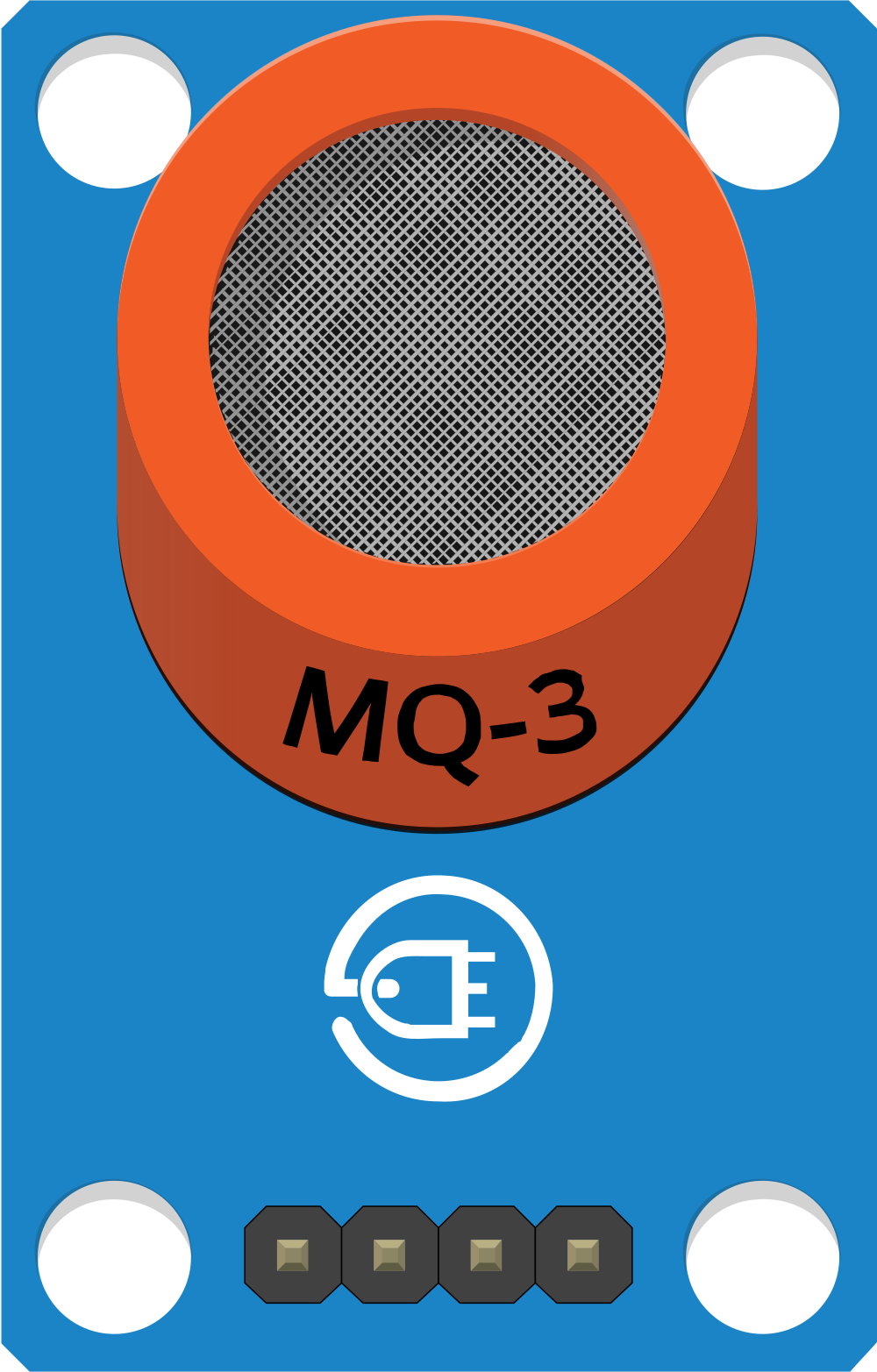
 Design with MQ-3 Breakout in Cirkit Designer
Design with MQ-3 Breakout in Cirkit DesignerIntroduction
The MQ-3 Breakout is a gas sensor module designed to detect alcohol vapors and other gases. It features a sensitive element that changes its resistance in the presence of specific gases, providing an analog output that can be easily read by microcontrollers. This makes it ideal for applications such as breathalyzers, gas leak detection systems, and environmental monitoring.
Explore Projects Built with MQ-3 Breakout
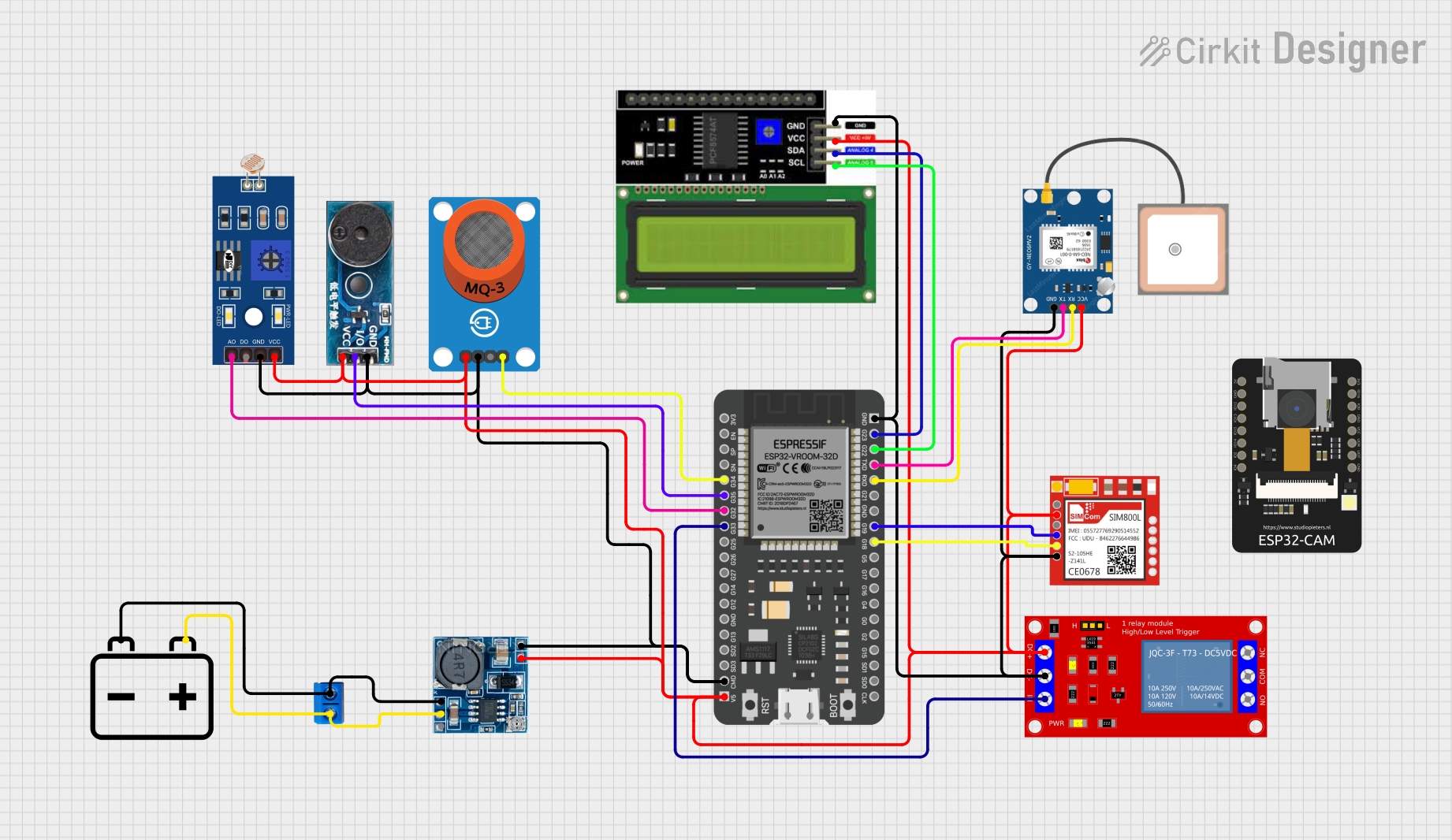
 Open Project in Cirkit Designer
Open Project in Cirkit Designer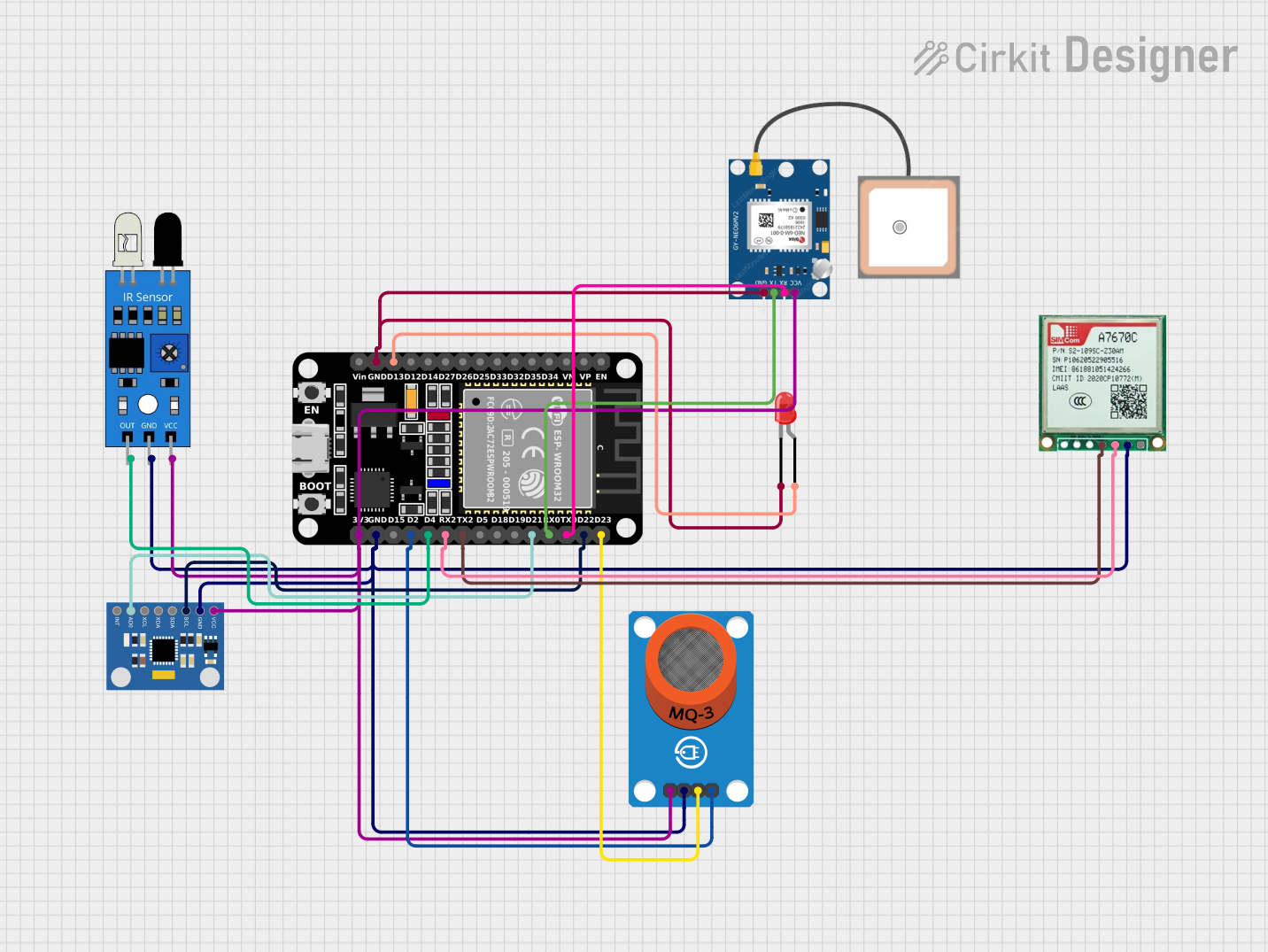
 Open Project in Cirkit Designer
Open Project in Cirkit Designer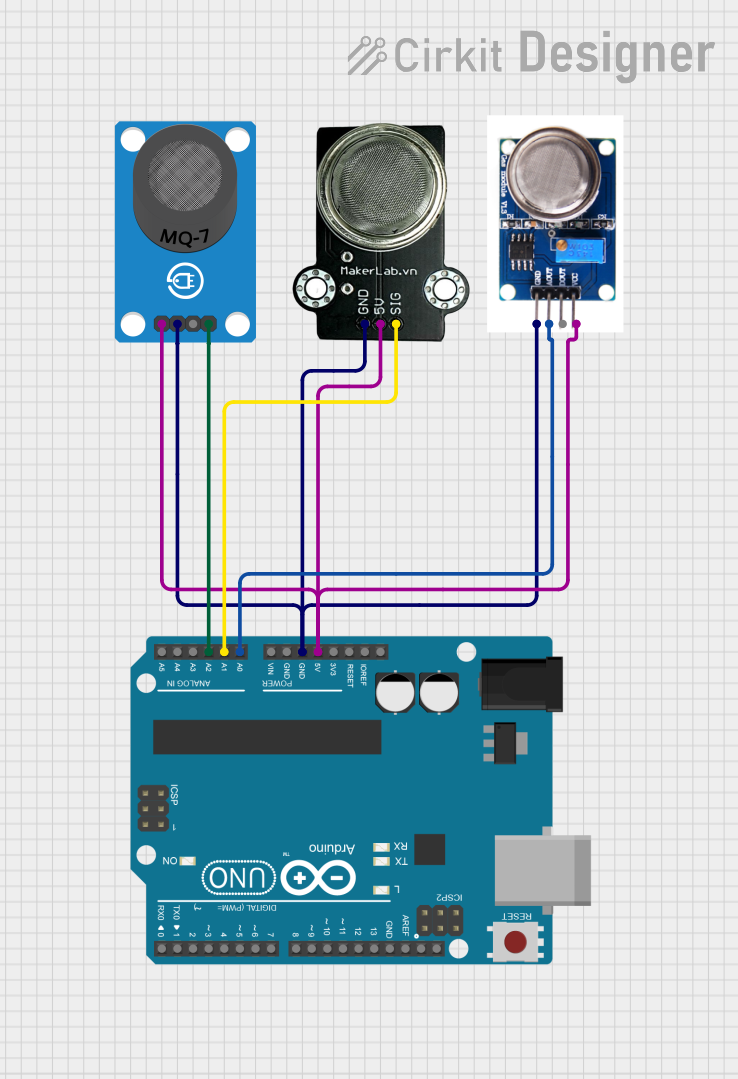
 Open Project in Cirkit Designer
Open Project in Cirkit Designer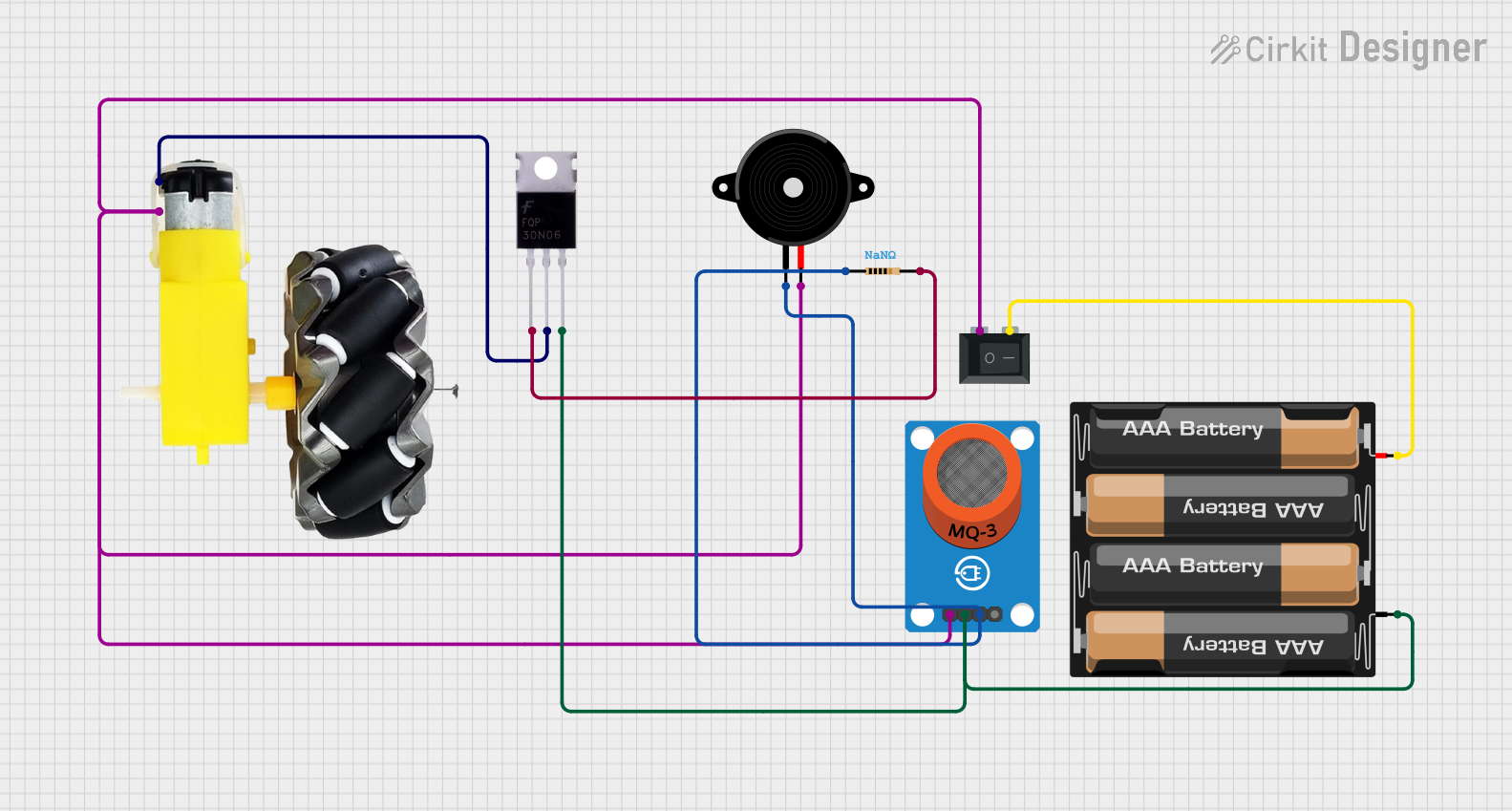
 Open Project in Cirkit Designer
Open Project in Cirkit DesignerExplore Projects Built with MQ-3 Breakout

 Open Project in Cirkit Designer
Open Project in Cirkit Designer
 Open Project in Cirkit Designer
Open Project in Cirkit Designer
 Open Project in Cirkit Designer
Open Project in Cirkit Designer
 Open Project in Cirkit Designer
Open Project in Cirkit DesignerCommon Applications
- Breathalyzers for alcohol detection
- Gas leak detection systems
- Air quality monitoring
- Industrial safety systems
Technical Specifications
Key Technical Details
- Operating Voltage: 5V DC
- Power Consumption: ≤ 800mW
- Output Type: Analog voltage
- Detection Range: 0.04 mg/L to 4 mg/L (alcohol concentration)
- Preheat Time: 20 seconds (recommended for stable readings)
- Operating Temperature: -10°C to 50°C
- Sensitivity: High sensitivity to alcohol vapors, moderate sensitivity to benzene and other gases
Pin Configuration and Descriptions
The MQ-3 Breakout typically has four pins. The table below describes each pin:
| Pin | Name | Description |
|---|---|---|
| 1 | VCC | Power supply pin. Connect to a 5V DC source. |
| 2 | GND | Ground pin. Connect to the ground of the circuit. |
| 3 | AOUT | Analog output pin. Provides a voltage proportional to the gas concentration. |
| 4 | DOUT | Digital output pin. Outputs HIGH or LOW based on a preset threshold (optional). |
Usage Instructions
How to Use the MQ-3 Breakout in a Circuit
- Power the Sensor: Connect the VCC pin to a 5V DC power source and the GND pin to the ground.
- Read the Output:
- Use the AOUT pin to read the analog voltage output. This voltage varies with the concentration of alcohol vapors.
- Optionally, use the DOUT pin for a digital HIGH/LOW signal if a threshold is set using the onboard potentiometer.
- Preheat the Sensor: Allow the sensor to preheat for at least 20 seconds after powering it on. This ensures stable and accurate readings.
- Connect to a Microcontroller: The analog output can be connected to an ADC (Analog-to-Digital Converter) pin of a microcontroller like the Arduino UNO.
Important Considerations and Best Practices
- Preheating: Always allow the sensor to preheat for the recommended time before taking measurements.
- Calibration: For accurate results, calibrate the sensor in a controlled environment with known gas concentrations.
- Ventilation: Ensure proper ventilation around the sensor to avoid saturation or false readings.
- Power Supply: Use a stable 5V power source to avoid fluctuations in the output signal.
- Avoid Contamination: Keep the sensor away from water, dust, and other contaminants that may affect its performance.
Example: Connecting the MQ-3 Breakout to an Arduino UNO
Below is an example of how to connect and read data from the MQ-3 Breakout using an Arduino UNO:
Circuit Connections
- VCC → 5V pin on Arduino
- GND → GND pin on Arduino
- AOUT → A0 pin on Arduino
Arduino Code
// MQ-3 Alcohol Sensor Example Code
// Connect AOUT to A0 on Arduino UNO
// This code reads the analog output and prints the value to the Serial Monitor
const int sensorPin = A0; // Analog pin connected to AOUT
int sensorValue = 0; // Variable to store the sensor reading
void setup() {
Serial.begin(9600); // Initialize serial communication at 9600 baud
Serial.println("MQ-3 Alcohol Sensor Test");
}
void loop() {
sensorValue = analogRead(sensorPin); // Read the analog value from the sensor
Serial.print("Sensor Value: ");
Serial.println(sensorValue); // Print the sensor value to the Serial Monitor
delay(1000); // Wait for 1 second before the next reading
}
Troubleshooting and FAQs
Common Issues and Solutions
| Issue | Possible Cause | Solution |
|---|---|---|
| No output or unstable readings | Insufficient preheat time | Allow the sensor to preheat for at least 20 seconds before taking readings. |
| Analog output is always low or zero | Incorrect wiring or power supply issue | Double-check the connections and ensure a stable 5V power supply. |
| Sensor output fluctuates significantly | Environmental interference or unstable power | Ensure proper ventilation and use a regulated power source. |
| Digital output does not change | Threshold not set correctly on the potentiometer | Adjust the potentiometer to set the desired threshold. |
FAQs
Can the MQ-3 detect gases other than alcohol?
- Yes, the MQ-3 is moderately sensitive to other gases like benzene, but it is optimized for alcohol detection.
How do I calibrate the sensor?
- Expose the sensor to a known concentration of alcohol vapor and record the analog output. Use this data to map the sensor's output to specific concentrations.
Can I use the MQ-3 with a 3.3V microcontroller?
- The MQ-3 requires a 5V power supply for proper operation. However, you can use a voltage divider or level shifter to interface the analog output with a 3.3V microcontroller.
What is the lifespan of the MQ-3 sensor?
- The sensor typically lasts for several years under normal operating conditions, but its sensitivity may degrade over time. Regular calibration is recommended.
By following this documentation, you can effectively integrate the MQ-3 Breakout into your projects and ensure reliable performance.